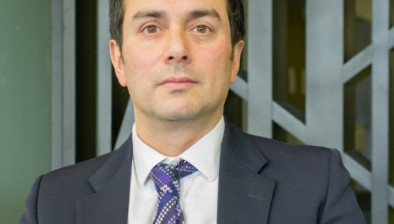NI Court of Appeal: Child murderer’s sentence increased despite ‘highly unsatisfactory’ mistakes by prosecuting counsel

Northern Ireland’s Court of Appeal has increased a child murderer’s sentence from 13 to 16 years, despite fears of double jeopardy and failures by the prosecution, as the interests of justice demanded it.

About this case:
- Citation:King v Sharyar Ali [2023] NICA 20
- Judgment:
- Court:NI Court of Appeal
- Judge:Mrs Justice Keegan
This was a reference brought by the Director of Public Prosecutions for Northern Ireland for a 2022 murder sentence where the trial judge set a tariff of 13 years following a Rooney indication and a plea of guilty.
Background
The victim in this case was Hunter McGleenon, who was 11 months old when he was murdered in 2019 in the respondent’s care. The respondent agreed to look after Hunter as his partner wanted to visit her dying grandmother’s house.
The respondent claimed that at 6am he took him downstairs to change his nappy and feed him, but that “wee Hunter fell off the sofa and hit his head”. At approximately 10.30am the respondent drove Hunter to his mother, but by then the child was blue, freezing cold, with visible bruising to his head.
Emergency services were called and resuscitation was attempted, however the child was dead. The respondent was charged with murder and assault occasioning actual bodily harm and entered not guilty pleas. He referred to the events as “an accident”.
Substantial medical evidence contradicted the respondent’s account; it described a child who was subjected to a forceful assault causing a range of significant injuries. This may have included “excessive shaking” and “blunt impacts to the head”.
Rib fractures were also noted, some of which may have been caused two to five days before death, while others appeared to be one to three weeks old. Hunter’s penis was also swollen and red.
The pre-sentence report found that while the respondent reported to be remorseful, at times “he appeared more focused on the impact of his actions upon himself, evidencing limited victim empathy”.
The Rooney hearing and the reference
A Rooney hearing was held during which the judge gave an indication of sentence in accordance with the guidance provided in Attorney General’s Reference (Nos 6-10 of 2005) (Rooney and others) [2005] NICA 44.
Following the Rooney hearing, the judge indicated that the tariff would be 13 years. That indication was binding on the judge. As a result, the respondent pleaded guilty the same day and was sentenced approximately six months later.
The reference procedure states that a court may increase a sentence where the original is “unduly lenient”. However, leave should only be granted in exceptional circumstances, and the reference procedure should not be treated as a general right of appeal for the prosecution.
The court must also decide whether such a sentence is unduly lenient, not simply lenient. Even if a court decides that a sentence is unduly lenient, the court retains a discretion whether to interfere with the sentence. Here, it was argued that the sentence was unduly lenient because:
- the judge did not afford sufficient weight to aggravating factors;
- the judge afforded too much weight to mitigating factors; and
- the reduction of three years, or 19 per cent, for the guilty plea was too generous.
Consideration
The court was not convinced that a 20-year starting point here was automatic. However, there were three factors which alone would bring the case into the 15/16-year sentence category, and these were:
- that the victim was a child or was otherwise vulnerable;
- that there was evidence of gratuitous violence; and
- extensive and/or multiple injuries were inflicted on the victim before death.
The trial judge did acknowledge that the victim would be categorised as “very young”, which must act to shift the starting point to above 15/16 years. However, the court also found that the trial judge did not refer to two important aggravating factors at all. These were a failure to obtain medical assistance, and the respondent’s failure to give an account.
Further, the respondent did not explain how the child died. Therefore, the court considered that the trial judge underestimated the aggravating factors in this case.
The court also found that the trial judge overestimated mitigation in the case. For example, the court rejected lack of intention to kill as being a mitigating factor of significant weight. As this death involved a young, defenceless infant, any difference between intention to kill, or to merely cause serious injury, was negligible.
Given this analysis, the aggravation manifestly outweighed the mitigation, and so the trial judge’s starting point of 16 years was wrong. It was therefore not simply lenient, but an unduly lenient sentence.
The appropriate determination was a 20-year sentence, where the reduction for a guilty plea should have been about one sixth. This would have brought the tariff to 17 years, before considering the effect of the Rooney indication.
In this case, the court noted that the respondent clearly relied on the Rooney indication in order to plead guilty. He was also advised by the defence that a reference could be made following the sentence.
The court found it “highly unsatisfactory” that the prosecution did not comply with its duty to warn of a reference, or in any way argue against the sentence indication given by the judge on the date of the plea or at the sentence date six months later, when they had an opportunity to do so.
However, the court also found that this was a serious case, and as such, mistakes made by prosecuting counsel “cannot be absolutely determinative otherwise public confidence in the justice system would be undermined and the interests of justice would not be served”.
As such, although the court was “highly critical of the prosecution approach”, this was not a basis for refusing the application for leave.
The court also considered the issue of double jeopardy, finding that it applied to some extent. The prosecution was now abandoning the Rooney indication, having apparently acquiesced to it before.
Through the reference, the prosecution was also seeking to advance a more robust case, which the court found to be unfair to the respondent. However, the court also noted that the evidence against the respondent was severe, noting: “This is not a case where it can be realistically argued that there was a viable defence.”
Therefore, any unfairness to the respondent was not as stark as it might have been if he had been given a sentence indication of a non-custodial sentence.
Conclusion
Ultimately, the court found that, in the interests of justice, the respondent’s tariff had to be increased. Taking into account the Rooney indication and the fault of the prosecution, the court substituted a tariff of 16 years.
As a final point, the court warned: “In future, counsel need to be much more careful in the construction of the basis of any plea and to present agreed facts which clearly explain exactly what the aggravating and mitigating factors are.”










